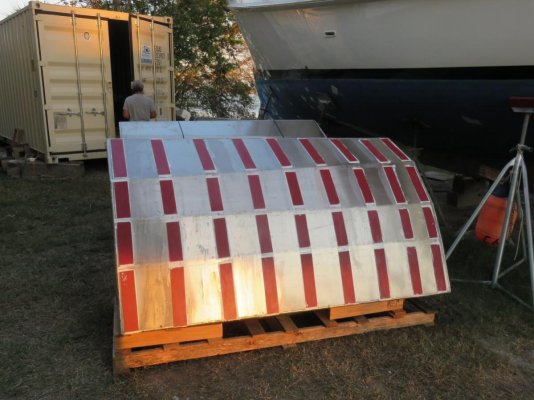Propnut
Senior Member
I’ve got both of my old steel fuel tanks removed (175 gal. each).
I’m getting ready to have new aluminum tanks fabricated and want to get it correct. The steel tanks are 71” long and were sitting on three cross stringers, one at each end and one in the middle, with nothing between the tank and stringers. I’m thinking about securing 3/4” marine plywood on the stringers and setting the tank on the plywood for more even support. Rather than securing plastic strips with 5200 to the bottom of the tank to keep moisture from the tank, what would be wrong with having the fabricator weld channel to the bottom of the tank , say 12” apart and then just set it on the plywood. I could even let the channel protrude a couple of inches out from the tank and thru the channel to the plywood.
Also what is the thoughts about clean- out ports? Install them or not? I’ve owned 3 previous boats with them , but never opened one up.
And lastly, to paint or not to paint? I’ve read the downside to painting but just wondering what the consensus of the group here is.
Any and all suggestions appreciated.
I’m getting ready to have new aluminum tanks fabricated and want to get it correct. The steel tanks are 71” long and were sitting on three cross stringers, one at each end and one in the middle, with nothing between the tank and stringers. I’m thinking about securing 3/4” marine plywood on the stringers and setting the tank on the plywood for more even support. Rather than securing plastic strips with 5200 to the bottom of the tank to keep moisture from the tank, what would be wrong with having the fabricator weld channel to the bottom of the tank , say 12” apart and then just set it on the plywood. I could even let the channel protrude a couple of inches out from the tank and thru the channel to the plywood.
Also what is the thoughts about clean- out ports? Install them or not? I’ve owned 3 previous boats with them , but never opened one up.
And lastly, to paint or not to paint? I’ve read the downside to painting but just wondering what the consensus of the group here is.
Any and all suggestions appreciated.


